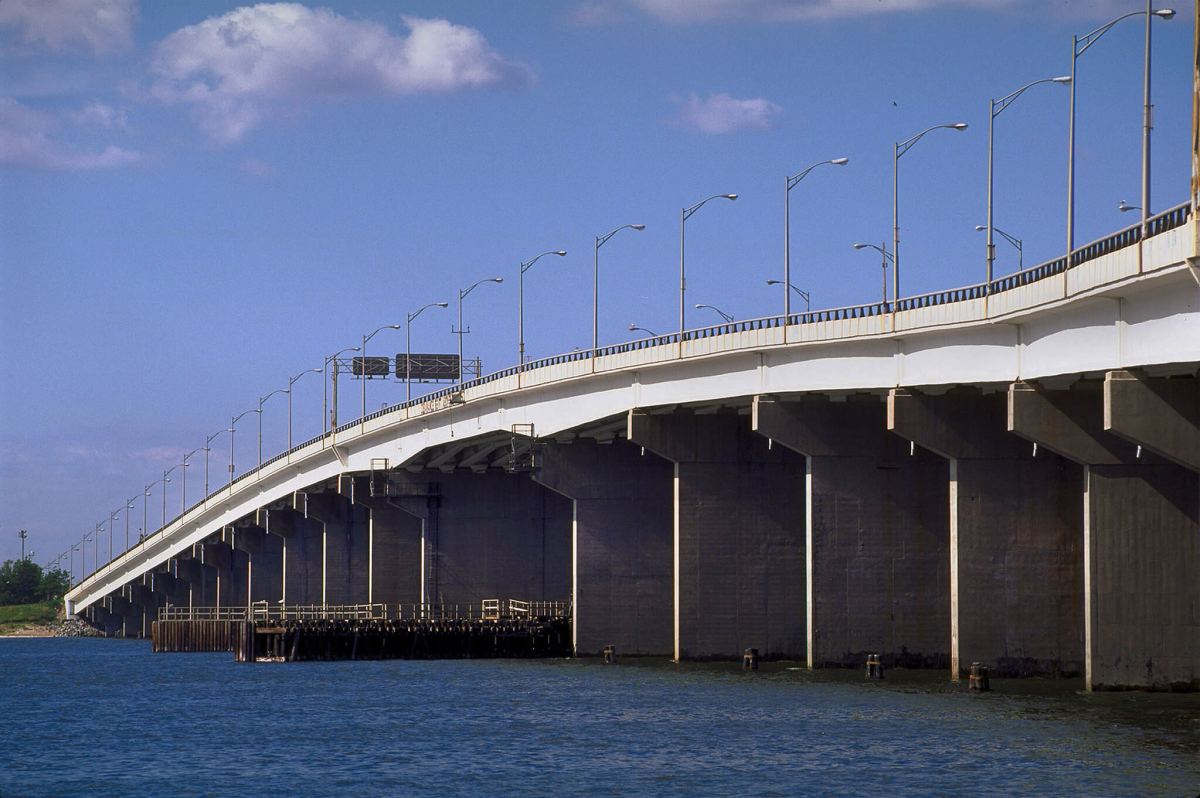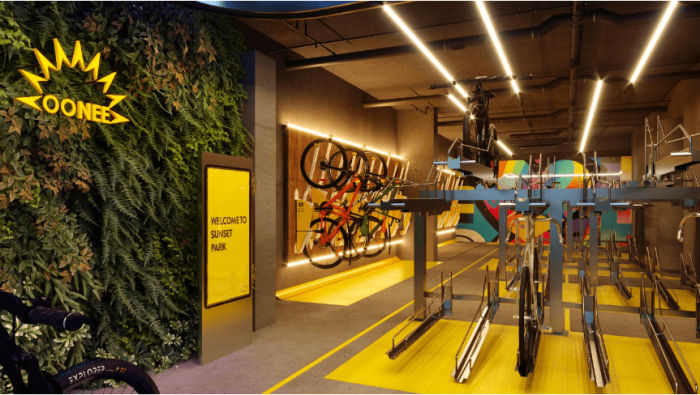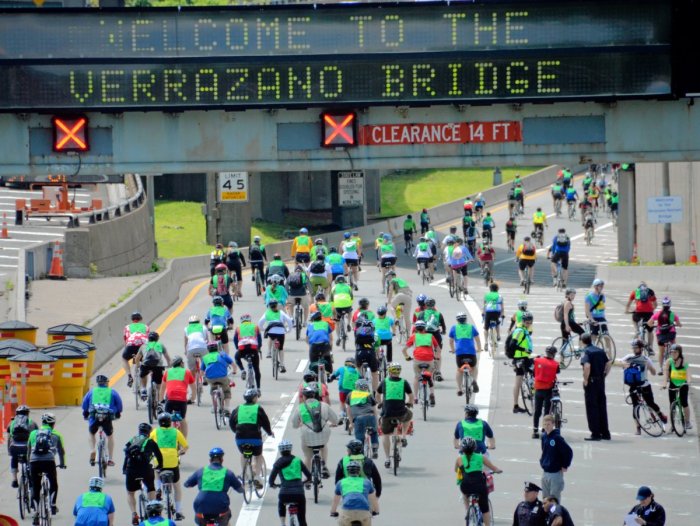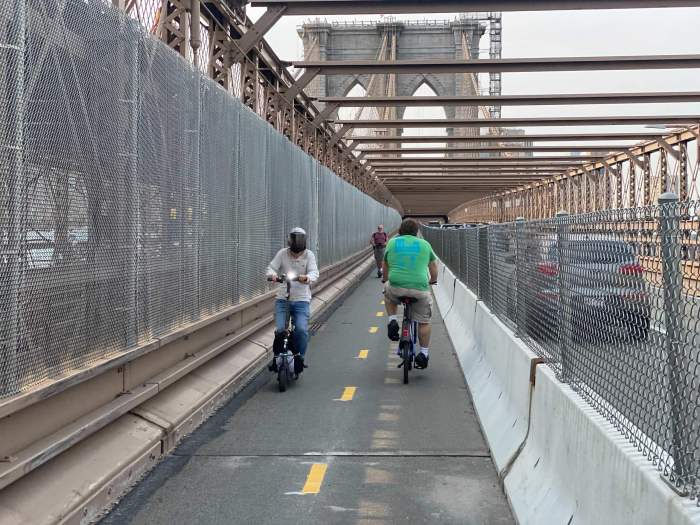The MTA is looking to make itself more bicycle-friendly, as it’s set to finish installing bike racks at every subway station and permit bike crossings on two of its toll bridges.
Bike parking infrastructure is currently present within 100 feet of an entrance at 90% of the Big Apple’s 472 subway stations, Jessica Mathew, the MTA’s Senior Advisor for Special Projects and Initiatives, told the MTA board at its Wednesday meeting. Mathew said the authority has identified 37 stations, mainly in the further reaches of subway lines in the outer boroughs, lacking in such infrastructure and is working with the city’s Department of Transportation to get racks installed there.
A DOT spokesperson did not respond to an inquiry as to a timeline for when the racks will be installed.
The agency has also finally opened up one of its seven bridges to crossing cyclists, Mathew said. Queens’ Cross Bay Bridge, between Broad Channel and the Rockaway Peninsula, has a pedestrian path now open to cyclists pedaling across Jamaica Bay, with “sharrow” markers already placed on the roadway, Streetsblog reported.
Completion of the full project, which will be shared between cyclists and pedestrians, isn’t expected until 2024, upon the conclusion of a capital project on the bridge’s southern end to make a ramp disability-accessible.
The authority also intends to widen a walkway on the Henry Hudson Bridge between the Bronx and Manhattan and construct ramps in order to make the path accessible to both bikers and pedestrians. That work is expected to conclude in 2025.
Down the pipeline, the authority has unclear plans for improvements on the RFK (Triborough) Bridge, Mathew said.
State law signed last year required the MTA to formulate a comprehensive plan on accessibility for bikes, pedestrians, and micromobility, and the authority says it will issue its final recommendations by the end of the year. The MTA is notably lagging in bike accessibility on its seven bridges throughout the city in comparison to the city DOT, which has installed bike infrastructure on many of its East and Harlem River crossings.
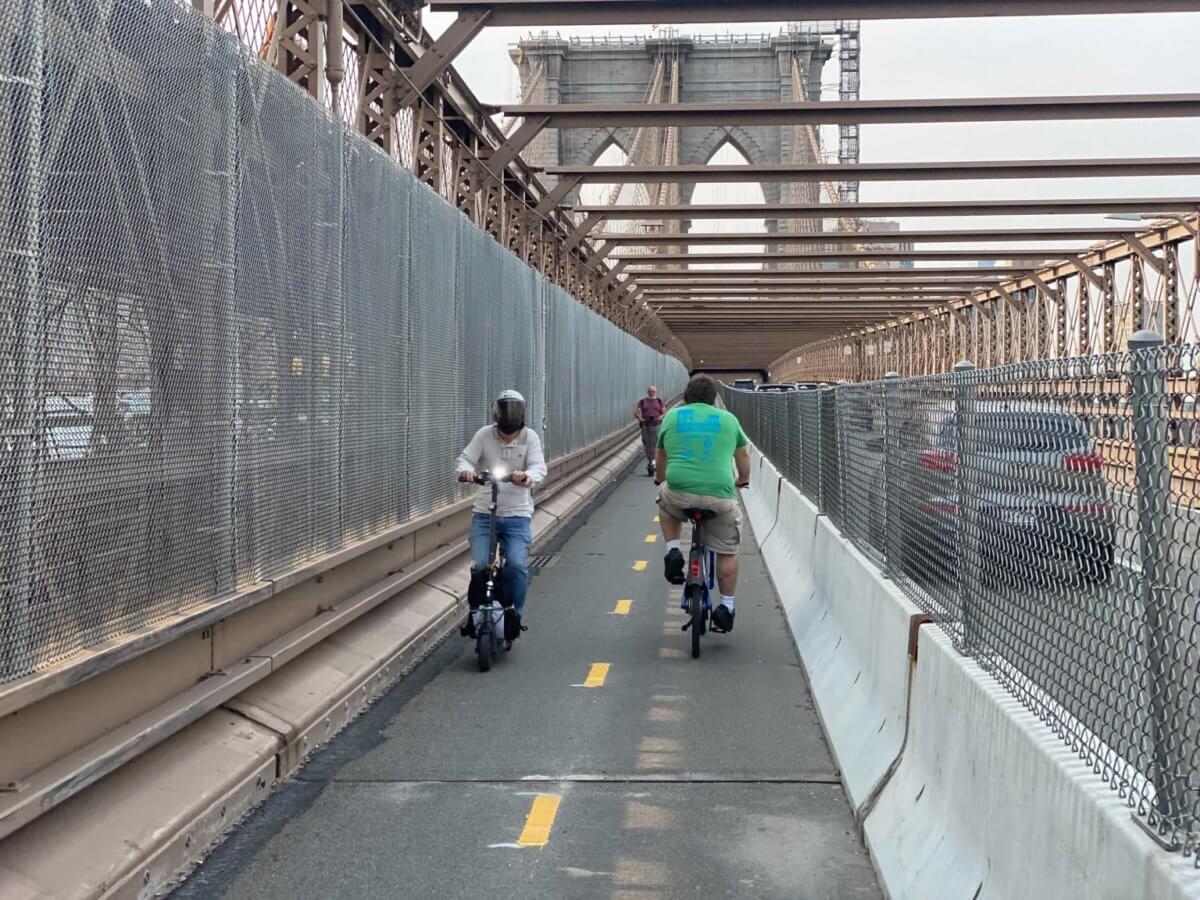
The authority intends to expand the number of bus routes with bike racks aboard to incentivize cycling, but dedicated bike infrastructure on the city’s longest suspension bridge, the Verrazzano Narrows, remains a pipe dream for cycling advocates.
The same is true for the Whitestone Bridge, with Mathew declaring bike engineering projects along most of their spans intractably complicated.
For others, like the Marine Parkway-Gil Hodges Memorial Bridge between southern Brooklyn and the Rockaways, the question of bike access is one of demand.
“One of the key things we’re looking at is where we think there’s demand for cycling, and making sure we’re serving our equity goals for the areas of the city that don’t have many other options, are far from subway stations,” Mathew said at a press conference Wednesday. “And that’s how we’re really thinking about prioritizing those investments.”
Some cycling advocates feel that’s not enough. Other than the Cross-Bay, it remains illegal to ride a bike across an MTA bridge on a pedestrian path, though enforcement is inconsistent. As a result, there’s no way for cyclists to demonstrate extant demand for cycling across a bridge without breaking the law.
“If it’s illegal to bike, how are we supposed to generate demand, or are we supposed to break their rules and show demand,” said Jon Orcutt of Bike New York. “It’s ridiculous.”
Orcutt argues that the city should just build bike infrastructure and the demand will follow, citing the Brooklyn Bridge as an example, where the construction of a bike path in what was previously a traffic lane quickly saw crossings of the world’s oldest suspension bridge double in just the first month.



